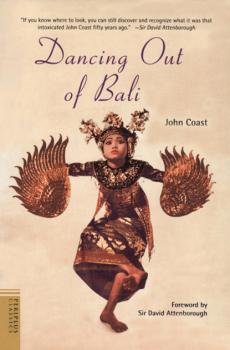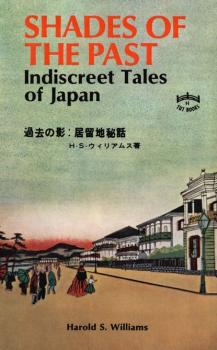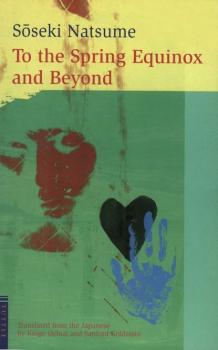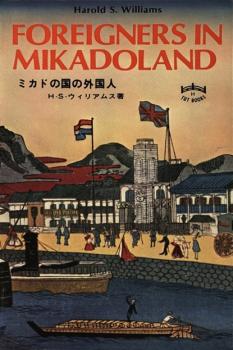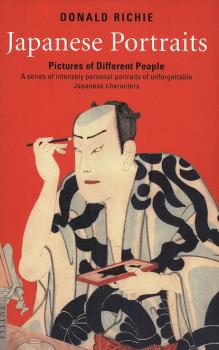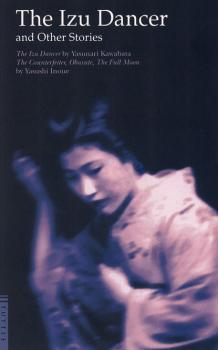ТОП просматриваемых книг сайта:
Биографии и Мемуары
Различные книги в жанре Биографии и Мемуары, доступные для чтения и скачиванияАннотация
Revered as one of the great literary classics of Japan, The Tales of Ise is an anonymous tenth–century collection of Japanese poems and prose.First published in 1608 as Ise–monogatori, the work is a product of court life in which the romantic assignations, intrigues, and social standards of aristocratic society in ancient Japan are vividly revealed. Each of the 125 episodes in the book consists of a story plus poetry in the uta form (five lines totaling thirty–one syllables) following the life of a nameless hero, who embodies the social ideals of the era, from his «coming of age» to his death.Arihara no Narihira, a ninth–century cavalier poet known for his individualism and elegance, is considered to be the author of a third of the poems, and it has been suggested that The Tales of Ise developed from his journal. The text is accompanied by an introduction by the translator, explanations of the cultural, literary, and historical material relevant to each episode, and several diagrams of the capital city and the Imperial Palace. The book is further enhanced by sixteen black and white woodblock prints by an unknown artist of the Tosa school.
Информация о книге
Автор произведения H. Jay Anonymous
Жанр Биографии и Мемуары
Серия Tuttle Classics
Аннотация
Talking Lightly was originally published in print form in 1994.Talking Lightly features interviews with twelve prominent personalities of new thought – figures who have helped define the New Age Movement. Author William Koopman, former editor and publisher of The Light provides a description of each person's history and accomplishments and describes how the interviews came about. These fascinating and intimate discussions explore many different concepts: from firewalking to music, from self-awareness to the tapping of inner strength.Talking Lightly will challenge readers to rediscover and reassess their perception of the world around them.
Аннотация
Sun Tzu's The Art of War has been the premier manual of Chinese military strategy for the past two millennia and, as thousands of Asian businessmen can attest, this classic work is as applicable to the corporate world as it is to the battlefield.This is the only contemporary edition of the classic Lionel Giles translation to contain all of the translator's original notes, to help you better understand Sun Tzu's powerful maxims and apply them in your daily life. John Minford's foreword brings insights to this classic text and its timeless relevance to the modern world. BILINGUAL EDITION: COMPLETE CHINESE AND ENGLISH TEXT This edition also marks the first time Giles' translation has been converted to Hanyu Pinyin—the standard Chinese romanization system. Additionally, the book contains the full Chinese language version of the text, along with Giles' extensive notes, with their original Chinese text references to the historical Chinese commentators, making this edition a treasure to military scholars, martial artists, and those planning to use Sun Tzu's strategies to conquer the business world.Sun Tzu's book will arm you with the knowledge that has allowed those who have studied this classic to gain victory—and often, total domination—over those who remain ignorant of its sage advice.
Аннотация
"If you know where to look, you can still discover and recognize what it was that intoxicating John Coast fifty years ago." —Sir David AttenboroughThis book is one of the great classics about Bali, now with dozens of illustrations and photographs.Dancing out of Bali is a fascinating personal account of a young Englishman who settled in a small house in Bali in the midst of the political turmoil that griped post–war Indonesia. There, he immersed himself in Balinese culture and made ambitious plans to bring a troupe of Balinese dancers and musicians to Europe and America. The book relates John Coast's daring and remarkable adventure that took him from revolution in Indonesia to the footlights of London and Broadway. Within a few weeks, the troupe had captured the hearts of audiences. Here are photographs of Bali and stories of the performer's magic island and of the enchanting dancers, including the beautiful 12–year–old Ni Gusti Raka. She became a star overnight and delighted audiences everywhere during the troupe's triumphant tour.It is also a story of Balinese culture and life in Bali–following the devastating Japanese occupation–of music and dancing in Bali, of many of the island's great performing dancers and musicians,
Информация о книге
Автор произведения John Coast
Жанр Биографии и Мемуары
Серия Periplus Classics Series
Аннотация
Prowling among these stories about Japan one finds riffraff and gentlemen, pirates and warriors, saints and sinners, smugglers and legitimate businessmen.All those, in fact, who made up the foreign communities of Japan in the early days. Harold S. Williams tells about them with the same inimitable humor, irony, drama and whimsy that made his earlier Tales of the Foreign Settlements such a popular success. With due regard for historical accuracy he recreates those fantastic days and the furor and fun with which they were filled.Here you can enjoy the privileged social status of belonging to the Victorian Volunteer Steam Fire Engine Company of Yokohama; you can join those Japanese pirates who were the first to meet Englishmen; arbitrate Japan's first labor dispute, involving foreigners, of course; witness the massacre of forty thousand Japanese Christians; revel in Nagasaki when it was the Paris of the Far East; travel over the Tokaido when it was the most picturesque and colorful of the world's highways; watch at close range each gruesome detail of an act of harakiri; dive for sunken treasures; watch the world's largest wooden vessel burn to the water line; marvel at one of the greatest advertising feats of all time.
Аннотация
This classic Japanese story by Soseki Netsume—the foremost novelist of the Meiji Period—is a masterpiece of Japanese literature.This book demonstrates Soseki Natsume's ability to dissect and elucidate the human personality in all its complexity. Here, his facile blending of narrative, extended monologue and sharp dialog leaves the reader with an almost personal knowledge of the characters. We are introduced to Keitaro, a recent college graduate hunting for his first job; he is the hero through whose eyes the other characters are seen. There is also Morimoto, the young adventurer with his tall tales; Sunaga, a troubled young man whose moving story forms the center of the novel; Taguchi, Sunaga's fun–loving yet practical uncle; Matsumoto, another uncle–a high–class «idler,» but wise in his own way; and Chiyoko, Sunaga's cousin and apparently the cause of much of his distress.Keitaro does not merely tell us the story of the others, however. Their lives are a part of his elucidation beyond that of the world of academia, and his knowing them enables him eventually to experience, however directly or indirectly, the romantic, the practical, the philosophical, and the existential.
Аннотация
Kagero Nikki , translated here as The Gossamer Years , belongs to the same period as the celebrated Tale of Genji by Murasaki Shikuibu.This remarkably frank autobiographical diary and personal confession attempts to describe a difficult relationship as it reveals two tempestuous decades of the author's unhappy marriage and her growing indignation at rival wives and mistresses. Too impetuous to be satisfied as a subsidiary wife, this beautiful (and unnamed) noblewoman of the Heian dynasty protests the marriage system of her time in one of Japanese literature's earliest attempts to portray difficult elements of the predominant social hierarchy. A classic work of early Japanese prose, The Gossamer Years is an important example of the development of Heian literature, which, at its best, represents an extraordinary flowering of realistic expression, an attempt, unique for its age, to treat the human condition with frankness and honesty. A timeless and intimate glimpse into the culture of ancient Japan, this translation by Edward Seidensticker paints a revealing picture of married life in the Heian period.
Аннотация
This is an account of life in the foreign communities and former Foreign Settlements or Concessions in Japan that flourished after Japan was opened to foreign trade in 1859. It tells of the imposters, the eccentrics, and the scandals, no less than the achievements of the scholars, the merchants, and the diplomats who contributed so much to the development of modern Japan.Here you will meet Townsend Harris, the first U.S. Consul General to Japan, the Grand Duke Alexander, and many other less well known, but just as interesting figures such as the energetic Rev. Bailey, the remarkable Mr. McLeod, and the Misses Butterfly and Chrysanthemum.All these events are portrayed in a series of chapters, arranged as nearly as possible in chronological order, each woven around some of the happenings of those times. Carefully researched, all of these events are historically accurate in every detail, and are written in Mr. Williams' highly enjoyable style.
Аннотация
These private recollections of longtime Japan resident and Japanese culture expert Donald Richie capture the personalities of the Japanese people with insight and humor. From the private musings of author Donald Richie, comes this extensive collection of brief written «portraits» which capture the personalities of 54 different Japanese people—some famous, some notorious, and some unknown. First written in 1987, Japanese Portraits presents one author's vision of Japanese culture and etiquette through precise, intimate profiles of both the ordinary and extraordinary people that make up the diverse nation. This collection of individual vignettes is perhaps the first book about the Japanese to view them entirely unhindered by the various theories about them, and about culture in Japan as a whole—depicting them as complicated, simple, inscrutable, and understandable, like anyone else, yet still unique. In these fifty-four pieces you'll meet some household names—Mishima, Kawabata, Mifune, Kurosawa—and little-known neighborhood figures: the would-be geisha, the ex-boxer turned gangster, the scheming bar madame and the old man dying alone. And there are dozens of others, individuals who have in common, besides their Japanese nationality, the fact that they knew the author, and that—fortunately for us—he knew them. These highly personal reminiscences form one of the most original and deeply felt books on culture in Japan ever to appear.
Аннотация
This Japanese literature collection contains four translated stories from two of Japan's most beloved and acclaimed fiction writers.The Izu Dancer, Yasunari Kawabata's first work to bring him recognition as a writer, is a novella about six Izu Peninsula travelers. As the six travelers journey together, intimacy develops and friendship overcomes class differences. Capturing the shy eroticism of adolescence, The Izu Dancer is a charming picture of the times.Yasushi Inoue's The Counterfeiter, although set in modern times, poses universal questions that transcend culture an era. Abasute and The Full Moon both explore themes of separation, loneliness, and isolation. Through the gloomy tales, Inoue's compassion shines, revealing yet another aspect of an author known for his vivid precision and economy of words. Inoue's stories are at least partially autobiographical, and Inoue's attitudes toward human destiny and fatalism are strongly influenced by his separation from his parents at an early age—yet all of his stories reveal his great compassion for his fellow human being.




